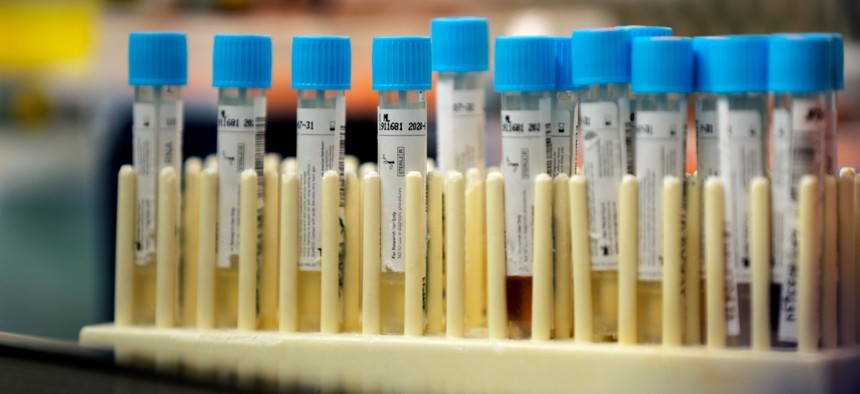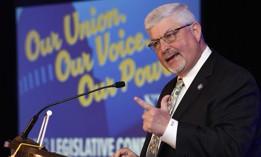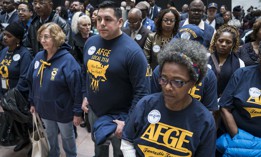Former FDA Commissioner Scott Gottlieb (my colleague at the American Enterprise Institute) has powerfully laid out the case for hope about effective drug treatments. As he notes, there are basically two categories of potential drugs to watch: antiviral drugs, which would attack the virus’s ability to replicate, and antibody drugs, which would reinforce the defenses of infected patients. Both involve well-trod research paths, and America’s academic and pharmaceutical research enterprises know the work required to develop them.
But they need two forms of assistance that only the federal government can give them. The first would involve rapid coordination of funds and research work on a massive scale. Some pharmaceutical companies have significant experience with the kinds of drugs required to treat COVID-19 patients, and are aggressively pursuing those drugs now. Some academic and government researchers are experts in this area too. But the usual protocols of corporate, academic, and public medical research stand in the way of robust cooperation on this front.
Only one entity has any chance of quickly breaking through these barriers and coordinating ongoing work while also assuring the researchers involved that the credit (and intellectual property) will end up where they belong in the end: The National Institutes of Health. In normal times, the NIH itself can be quite slow and bureaucratic. But it has the requisite standing with all involved, the capacity to facilitate investigation and optimize clinical trials, and the necessary experience coordinating public and private work to take this on.
There is even something of a model in the role the NIH played in the early 1990s in advancing work toward antiretroviral therapies for HIV. The effort required now would need to be much faster and nimbler, and government agencies aren’t generally known for either of those things. But no one has a better shot at pulling it off, and the NIH is highly motivated and well run. It needs to take the lead.
The agency has the statutory authority to take on this role right now. Tucked away in the 21 st Century Cures Act , a large and complex piece of legislation enacted in 2016, is a provision that gives the NIH significantly expanded flexibility with what the statute blandly calls “other transaction authority.” This lets the agency’s director and senior leaders turn the NIH into a kind of coordinating entity for research and development work at a high level under some circumstances. The NIH has a lot of freedom to recruit partners, set milestones, coordinate internal and external work, protect the intellectual-property rights of all involved, demand deliverables with relatively minimal administrative burdens (particularly during a public-health emergency), and maybe even organize cooperation around mobilizing advance manufacturing capacity to make effective treatments available quickly.
The NIH could start using this authority immediately to put itself at the center of a multifront campaign to develop effective treatments for COVID-19. No one would be compelled to participate, but it could offer major benefits for academic and corporate partners—and there is reason to think both would eagerly welcome the help.
What the NIH will require from Congress to do this, however, is money. Although it has a lot of flexibility to create a new framework for coordination, moving appropriated money around to enable the work to proceed isn’t quite so easy to do on the fly.
The NIH can start with the limited funding flexibility it has. But when Congress returns for further emergency legislation later this month, it needs to prioritize a meaningful infusion of cash—nothing near the scale of the economic relief it has undertaken, but in the billions, and if the effort is also to include support for vaccine work, maybe in the tens of billions—to the NIH for this purpose. And legislators should consult with the agency’s leadership to see whether any additional legal authorities are required for the work to proceed swiftly.
Second, work toward effective treatments requires the active cooperation and total commitment of the Food and Drug Administration. There is no getting around the fact that the FDA slowed the process of making tests available to Americans, wasting precious time and impeding containment efforts. The agency knows this, and is eager to do better. But it still lacks the necessary urgency to avoid slowing down efforts to develop treatments.
The FDA is responsible for a wide array of biomedical responses to the coronavirus—including not only potential treatments but also diagnostics, laboratory accreditation, medical- and safety-equipment certification, various importation procedures, and much else. All of these are important. But the agency needs to focus special resources and attention on potential treatment paths, separating these from its normal approval work and implementing new procedures to collaborate closely with manufacturers at every step.
One model here, as Gottlieb has suggested, could be the agency’s “Real-Time Oncology Review ” process, in which the FDA reviews clinical-trial data for promising drugs for particularly deadly cancers as results become available, rather than only after the entire trial has concluded. This can speed the process quite a bit, and a similar procedure with COVID-19 treatment trials is clearly in order.
But the degree of urgency and focus must be even greater than the FDA’s most accelerated processes today. We are in the midst of a global pandemic that threatens countless lives, and our response to it threatens economic ruin. An effective drug for those who are most endangered would dramatically alter these circumstances. The FDA should treat its role in facilitating our response to this disaster as the single most important task it has confronted in its history. And enabling the rapid development of a safe and effective treatment must be at the top of its agenda.
In these two ways—by coordinating the research effort and accelerating the approval process surrounding new treatments for COVID-19—the federal government can change the fundamental character of the global response to the virus. It can help make treatments possible sooner rather than later, and the procedures put in place to do that can then also help speed up efforts toward a vaccine.
Our government is far from ideally suited to these roles, of course. Bureaucracy is always slow and lumbering. Expecting it to speed things up is often folly. But in this emergency, these two agencies may have what it takes to meet these two particular challenges. And if Congress and the president can help to spur them, their work could make the crucial difference.
Such an emphasis on advancing treatments would let America play to its comparative advantage in this global response. We are engaged in mitigation strategies like almost every other country—succeeding in some respects and failing in others. It is important that we persist in these and correct our mistakes while the strain on our health system peaks. But on the medical-research front, America is not just another country. When it comes to finding treatments, and ultimately a vaccine, we have by far the best potential to succeed, and thus to help the world escape this nightmare.
To do that, and do it quickly, our public and private sectors must cooperate. And for that to happen, our government needs to get its act together.













